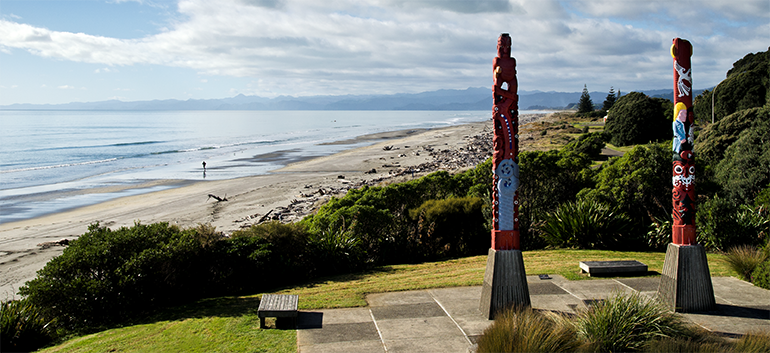Te Tūtohunga o Te Kaupapa | The proposed approach
On this page

© Toi EDA
He takenga mai | Background
He Pou Tāngata o Aotearoa is the proposed approach in this plan for whānau-designed, hapū and iwi owned aspirations, actions and outcomes.
Whānau are major connectors and influencers in the lives of individual whānau members. It is also the collective that, when operating at a high level, ensures whānau values are upheld, knowledge and experience are shared, and rights and responsibilities are fulfilled.
Whānau are affected by the world around them and the development of capabilities and skills that enable them to simultaneously create economic prosperity, social cohesion, cultural inclusion and environmental sustainability is burdensome. Therefore, recognising how these complex interdependencies preclude the ability of whānau to thrive is the single most important first step – how big the barriers/problems are.
The RSLG recognises that only whānau, hapū, iwi and hapori Māori have the mātauranga to develop the potential solutions for their own advancement, create their own agenda for change and design the ways in which the agenda is fulfilled. The RSLG are committed to being the jealous guardian and protector of that process and its outcomes.
Te hua | The outcome
Ultimately, the tāngata Aotearoa pou of the whare is intent on achieving the following outcome: “To build the economic, social, cultural and environmental independence and authority of whānau – kia rangatira ai te mana motuhake”.
Te kaupapa | The strategic agenda – The strategic agenda for this Kaupapa is mana motuhake – a whānau-designed, mātauranga-led,iwi and hapū-owned agenda.
Te whakaahua i te kaupapa | A design process – Te Tīriti o Waitangi in action – putting whānau, hapū, iwi and hapori Māori in charge of their change.
Te whakatinana i te kaupapa | Executing the agenda – The process is wānanga – mobilising whānau to be active and have confidence in reclaiming a culturally defined “design” norm, increasing their investment in the process, its outputs and its responsibilities.
Tāngata Aotearoa
Wawata 1: Te Oreore – Whānau, hapū, iwi and hapori Māori mobilise for the Regional Workforce kaupapa.
Wawata 2: Te Wānanga – Whānau, hapū, iwi and hapori Māori wānanga relevant data, the issues and the barriers to participation and success.
Wawata 3: Te Aromatawai – Whānau, hapū, iwi and hapori Māori analyse relevant data, the issues and the barriers to participation and success.
Wawata 4: Te Whakatau – Whānau, hapū, iwi and hapori Māori decide aspirations and actions.
Wawata 5: Te Kōkiri Whakamua – Whānau, hapū, iwi and hapori Māori implement aspirations and actions.
Tāngata Niu Tīreni
Aspiration One – Seasonality: Our Bay of Plenty employers provide sustainable and fair employment; and by balancing seasonal peaks and troughs, workers across the Bay can access stable, secure and suitable work.
Aspiration Two – Technology: Every person in the Bay of Plenty is digitally connected and enabled to participate in the region’s future workforce, including our growing knowledge economy.
Aspiration Three – Education and Training: Our Bay of Plenty residents can participate in flexible education and training that transcends location and personal circumstance barriers and connects with the needs of whānau and community.
Aspiration Four – Climate Change: The Bay of Plenty Region seeks to understand and embrace the full spectrum of climate change impacts on employment and has a focus on emerging circular economy initiatives to drive future success.
Aspiration Five – Resilience: Businesses, communities, and households across the Bay of Plenty are supported to be resilient in the face of sustained disruption, with our people supported and prepared to react and adapt as needed.

